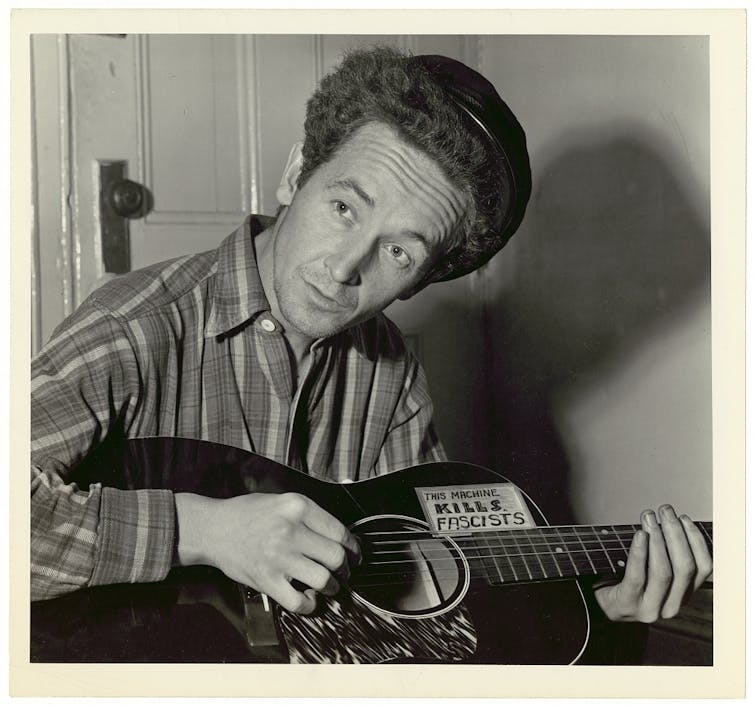TALLAHASSEE, Fla. (AP) — “Don’t say gay.” Regulation of books and classroom discussion. Teachers, parents and school librarians all navigating new and uncertain ground. LGBTQ+ rights under attack. A very public spat between state government and Disney. And at the center of it all is a governor who has emerged as a rival of former President Donald Trump and likely has his eyes set on the White House.
This is Florida at this moment in history, in mid-2023.
For many of those who live in Florida, recent months have brought some changes — many linked to Gov. Ron DeSantis. Here, longtime Florida-based Associated Press journalist Brendan Farrington, who has covered the state’s politics since 1997, reflects on the changes for different groups and puts them into the context of the cultural and political landscape.
HOW LIFE IS CHANGING FOR ...
YOUR AVERAGE FLORIDIAN:
For your average Floridian, cost of living concerns have become an issue and really are not being addressed as vocally as most folks would have hoped.
Rents are going sky-high. Property insurance, whether you live near the coast or not, is becoming less available and less affordable.
Inflation obviously has played a role, but a lot of the discussion has been steered away from those issues affecting everyday Floridians into more of an “us against them” on cultural issues or abortion and discussions of race.
Guns are another thing. Under a new law, anyone who can legally own a gun can also carry it concealed without a permit. Now you need a permit in order to carry a gun and go through training and a background check to carry a concealed weapon. That will no longer have to happen beginning July 1.
There also seems to be an uptick in hate-related incidents. Somebody projected anti-Semitic messages on the Jacksonville Jaguars’ stadium last season and there have been self-proclaimed Nazis waving flags and signs at events.
And, again, abortion. In April 2022, Florida passed a law setting a ban on abortion after 15 weeks, two months before the U.S. Supreme Court overturned Roe v. Wade, and passed a stricter one enforcing that ban after six weeks this year. It’s clear reproductive rights are taking a hit in Florida.
TEACHERS:
With the “Don’t Say Gay” bill — opponents call it this because it bans discussion on sexuality in schools with students — the argument for the people who support the legislation say it doesn’t mention the word gay, that it’s simply to protect children from material that parents should have more of a say in.
But because of vague language, some people are wondering whether they can mention LGBTQ+ issues at all. A student may ask, “Why does so and so have two mommies?” Some teachers feel they can’t even address the question without ramifications.
The bill also has left some teachers feeling they can’t even represent who they are in the classroom. If they’re gay, transgender or bisexual, they’ve been left to conclude they can’t have or say anything indicating that. This includes hiding items such as photographs of partners and gay pride emblems.
Some people say it’s better not to say anything than to risk violating the mandates coming down from the state Department of Education.
PARENTS:
It empowers parents who agree with DeSantis’ philosophy and ideology on education. But parents who welcome this discussion feel like, “What about us? What happened to our right to have our children taught about these things?” Parents with LGBTQ+ children feel they’re being denied access to health care, and subsequently their children will be put at risk for depression or suicide.
It’s almost symbolic of a lot of what DeSantis has put forward. It divides people of different ideologies and empowers people who agree with him to speak out more. It empowers parents who — for religious or moral or whatever reasons — do not want their kids to be told about sexuality, particularly gender transition or about other gay students.
And those parents who welcome these policies with open arms are becoming more engaged in school boards. DeSantis, more so than any other governor, has promoted school board races, encouraged people to run, helped candidates who share his ideology, and encouraged parents to complain to school boards. It’s put a lot more tension on the schools. And it’s dividing people among ideologies. A Sarasota school board member recently walked out of a meeting after the Republican chairwoman allowed a parent to personally attack him for being gay.
SCHOOL LIBRARIANS:
School books must be approved by school librarians. And that’s raised questions about schools that don’t currently have a “media specialist” — someone trained to work with staff on approving library and classroom material. It allows investigations of books to happen more easily, which forces people to justify why the books should be in schools over the complaints of people who want them banned.
There are still a lot of questions about the vague language used, such as whether a book can include an LGBTQ+ character even if there is no sexual content. It’s causing schools to be a bit more cautious, perhaps even more than needed, in an effort to conform to the governor’s wishes.
LGBTQ+ RESIDENTS:
It’s caused some steps back in LGBTQ+ rights. I think people feel more endangered — that they can be the subject of hate attacks — and by having the government get involved in these issues, people who are homophobic may feel like they can act out more often.
I’ve talked to a lot of LGBTQ+ lawmakers and activists who feel they are not being treated like whole people, and that the government is trying to suppress who they really are. In some cases, it reminds people of the anti-gay movement in the 1970s. But now, instead of fighting for rights, they are defending rights.
THE THOUSANDS OF DISNEY EMPLOYEES IN CENTRAL FLORIDA:
I don’t know how it affects Disney employees’ day-to-day rights. I’m sure they’re taking a keen interest in the feud going on between DeSantis and their employer right now.
I don’t think Disney is going anywhere. North Carolina has floated the idea of trying to lure them. Some people have discussed that and wondered, “What if Disney moves?” But it is a huge company with such a huge footprint in central Florida, that it’s highly unlikely you’ll see this get to the point where Disney says, “No, we don’t want to be in Florida.”
DEMOCRATS AND REPUBLICANS:
Democrats once dominated politics in the state of Florida.
For decades, their party was in control. They controlled the Legislature and the governor’s office most years. Even when the Republicans were elected to the governor’s office, they had a Democratic Legislature to deal with until Jeb Bush seemed to bring new life to the state Republican Party, despite losing his first election in 1994. By the time he won in 1998, Republicans had a legislative majority and built on that year after year after year.
Republicans now have a supermajority in the Legislature. They now hold all statewide offices and have more registered voters than Democrats. And the power of the party is playing to its strengths and voter engagement and messaging.
Democrats seem to be frustrated in Tallahassee because they have no power to stop legislation without the numbers to prevent bills from moving forward. They’re now relegated mostly to messaging, trying to work with colleagues on the other side of the aisle to tweak legislation and make what they call bad bills a little bit better.
But generally, they know they can’t do anything. Republicans are having a field day and, basically, doing whatever they want. DeSantis has exerted more control over the Legislature than any governor I’ve seen.
DESANTIS HIMSELF:
Gov. DeSantis won by a larger margin than any Republican has won the state of Florida. And he’s used that as a mandate that the state supports him and his policy and ideology.
So it’s made him more powerful in Florida. It’s made him more emboldened. And the agenda that he has passed fits very well for a GOP presidential primary.
A lot of the issues that he’s taken on, he’s doing so to play just as much in places like Iowa and South Carolina as he is in Florida. He’s used the word woke more times in the past year than probably the four years previous. That’s been a big change for him.
He’s been doing his book tour and traveling. His name recognition has skyrocketed nationally outside of Florida. But with that, he’s increasingly coming under fire from fellow Republicans, especially Trump.
Other candidates and potential hopefuls such as Mike Pence and Nikki Haley have criticized him for attacking Disney, which they say is attacking businesses and isn’t the Republican thing to do. In turn, DeSantis has had to defend himself more. While he isn’t a candidate yet — that’s expected very soon — he’s essentially campaigning while traveling to Iowa, New Hampshire and other key primary states.

